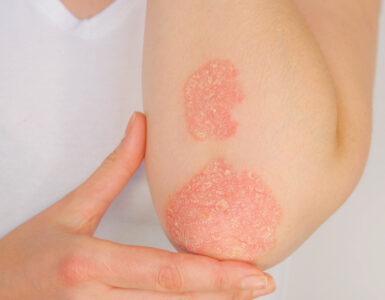(silybum marianum)
Botanical family: Asteraceae
Parts used: Seeds
Main active ingredients: Flavolignans (silymarins), flavonoids, lipids, sterols
Actions: Antioxidant, liver protection
Good for: Liver disorders, liver damage from excessive alcohol, overindulgence
Available forms: Capsules, tea, tablets, tincture
With its large purple flower heads, milk thistle is a member of the sunflower family. Native to the Mediterranean, it now grows wild in many other parts of Europe including the UK. The herb blooms from June to August and the shiny black seeds, which are used medicinally, are collected at the end of summer when they are at their ripest.
Its leaves have milky white veins, which are said to have originated from a falling drop of the milk of the Virgin Mary, which may explain why it is sometimes referred to as St Mary’s thistle or Our Lady’s thistle.
History of Milk thistle
Milk thistle has a long tradition and solid reputation for helping liver problems, which is confirmed in some scientific papers published on the plant. The Greek physician Dioscorides (40-90 AD) mentions milk thistle’s healing properties. Hildegard von Bingen, the first woman to write a herbal in 1152 includes milk thistle and describes its uses, while the great 18th-century herbalist Culpepper noted that it can be used ‘to open the obstructions of the liver and spleen, and thereby is good against the jaundice.’
Current uses of Milk thistle
LIVER DISEASE
A meta-analysis of data from 19 clinical trials found that silymarin had a protective effect in people with liver cirrhosis. Survival rates were significantly higher in those taking milk thistle extracts, both overall and when taking liver-related mortality into account.
EXCESSIVE ALCOHOL
Milk thistle helps to strengthen the liver by preventing the depletion of glutathione, an amino acid like compound, which is essential to the detox process. As excessive alcohol depletes glutathione, milk thistle is also often given to help protect the livers of alcoholics or those recovering from alcohol abuse.
How to take Milk thistle
The recommended dose for milk thistle is up to 200mg of standardised extract (containing 70-80 per cent silymarin) twice daily.Watchpoints
Milk thistle is regarded as one of the safest herbs on the market and virtually no side effects have been reported.In some people, however, it may have a slight laxative effect for a couple of days after you first start to take it.
Try this
Milk Thistle can be found in Thisilyn Milk Thistle and Thisilyn Maximum Strength Milk Thistle – traditional herbal medicinal products used to relieve the symptoms associated with occasional over indulgence of food and drink such as indigestion and upset stomach, exclusively based upon long-standing use as a traditional remedy.
It can also be found in Thisilyn Artichoke in combination with artichoke (traditionally used to help maintain healthy digestion) and Thisilyn Turmeric Xtra in combination with turmeric (traditionally used to help maintain healthy a healthy bowel and healthy digestion).







